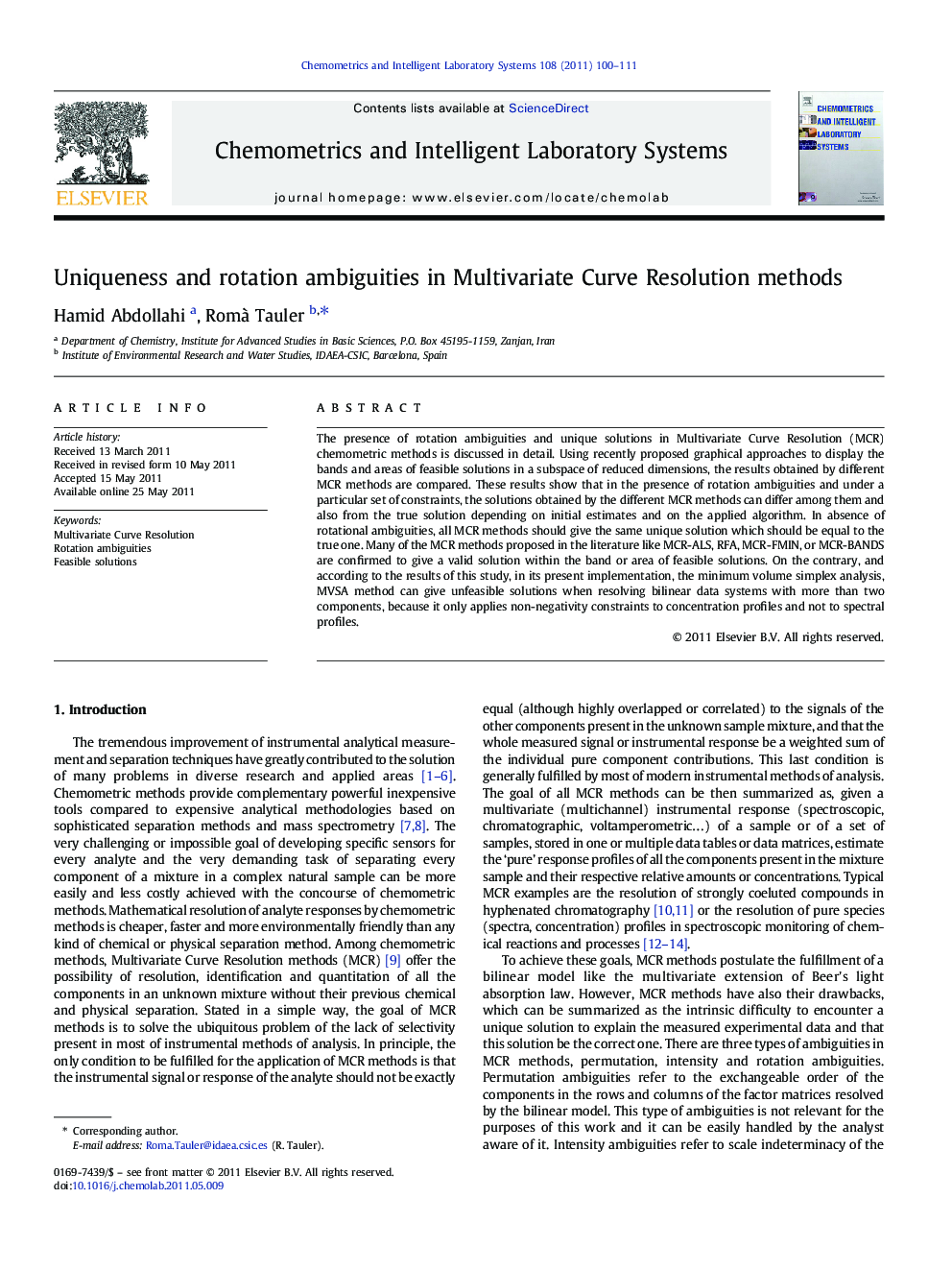| Article ID | Journal | Published Year | Pages | File Type |
|---|---|---|---|---|
| 1179975 | Chemometrics and Intelligent Laboratory Systems | 2011 | 12 Pages |
The presence of rotation ambiguities and unique solutions in Multivariate Curve Resolution (MCR) chemometric methods is discussed in detail. Using recently proposed graphical approaches to display the bands and areas of feasible solutions in a subspace of reduced dimensions, the results obtained by different MCR methods are compared. These results show that in the presence of rotation ambiguities and under a particular set of constraints, the solutions obtained by the different MCR methods can differ among them and also from the true solution depending on initial estimates and on the applied algorithm. In absence of rotational ambiguities, all MCR methods should give the same unique solution which should be equal to the true one. Many of the MCR methods proposed in the literature like MCR-ALS, RFA, MCR-FMIN, or MCR-BANDS are confirmed to give a valid solution within the band or area of feasible solutions. On the contrary, and according to the results of this study, in its present implementation, the minimum volume simplex analysis, MVSA method can give unfeasible solutions when resolving bilinear data systems with more than two components, because it only applies non-negativity constraints to concentration profiles and not to spectral profiles.
